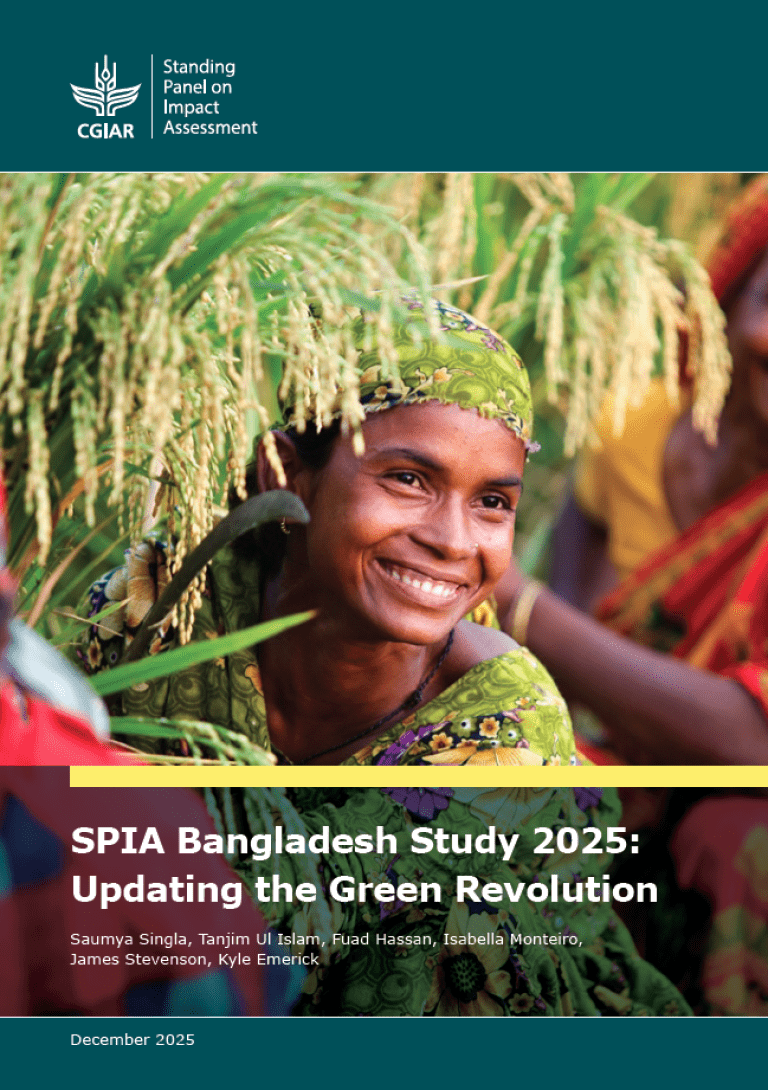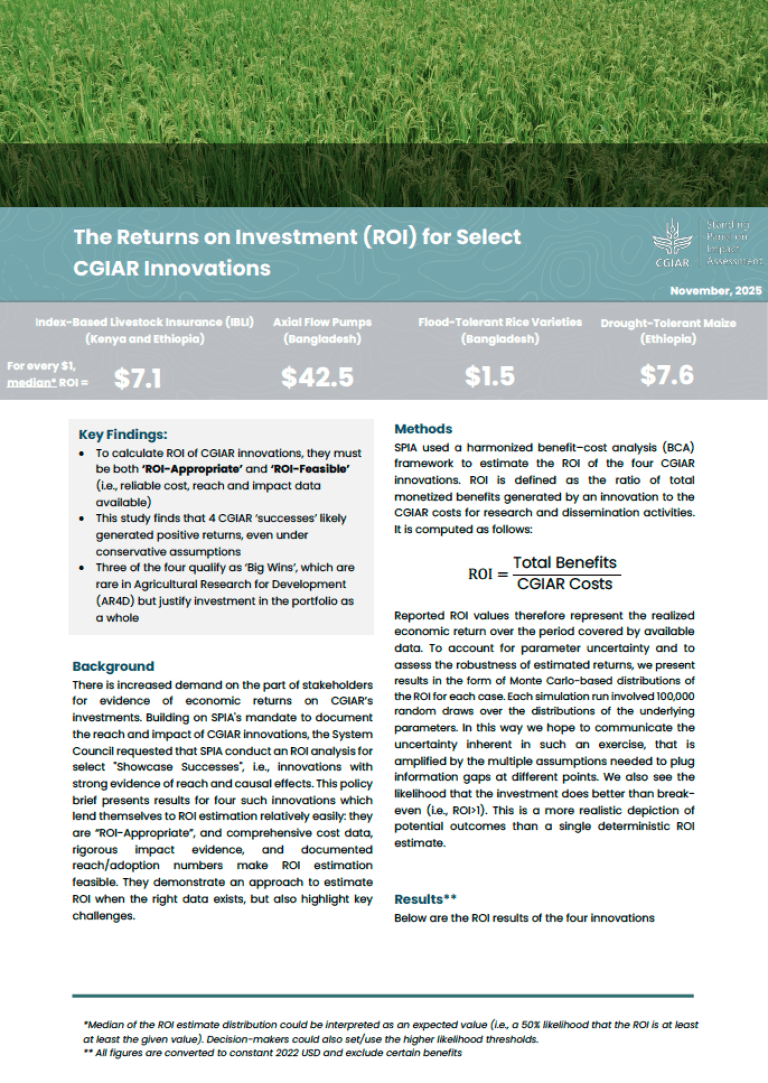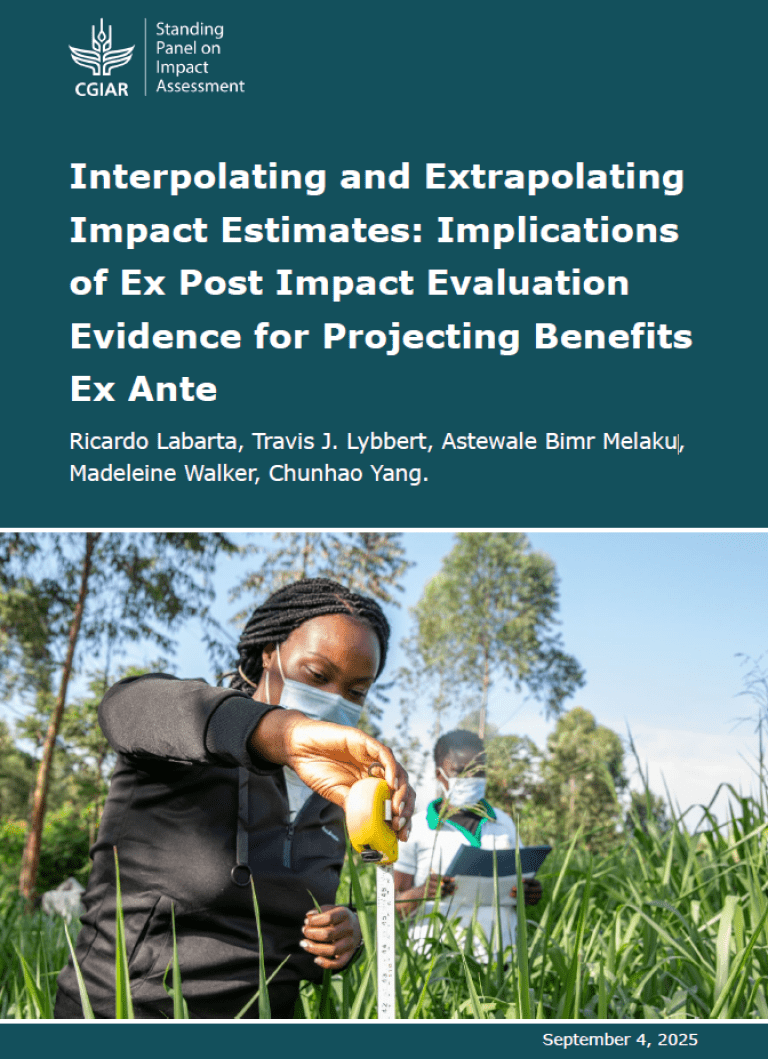Abstract
Although many studies over the years have sought to document the impacts of agricultural research, there remain critical gaps in the extent to which different components of the CGIAR portfolio have been studied. One area of CGIAR research and related activities that many recognize as being under - assessed is ‘germplasm collection, conservation, characterization and evaluation’ (GCCCE). This is a large area of CGIAR activity: in 2008 - 2010, approximately 12% of the CGIAR research spending was devoted to this activity. Although cumulative numbers are difficult to calculate, it has been estimated – based on data compiled and reported in earlier CGIAR Financial Reports – that in the years from 1970 to 2010, a total of about US $800 million (in 2002 dollars) has been spent on GCCCE related activities. In spite of this sizeable investment, there have been few studies that have attempted to assess the impact of these GCCCE activities or to quantify the benefits derived.
The aim of this study commissioned by SPIA was to measure and value - to the extent possible - the impacts related to GCCCE related activities by the CGIAR. As past efforts in this sort of assessment have been limited in scope, scale, data and methods, one of the initial objectives of this study was to propose a conceptual framework and set of methods that might be applied in future efforts to estimate these types of impacts. The perspective taken with respect to valuation was derived from the concept of total economic value, which embraces multiple sources of value, although not all of which equally amenable to measurement.
Citation
Robinson, J. & Srinivasan, C.S. 2013. Case-studies on the impact of germplasm collection, conservation, characterization and evaluation (GCCCE) in the CGIAR
Author(s)
Robinson, J. & Srinivasan, C.S.





